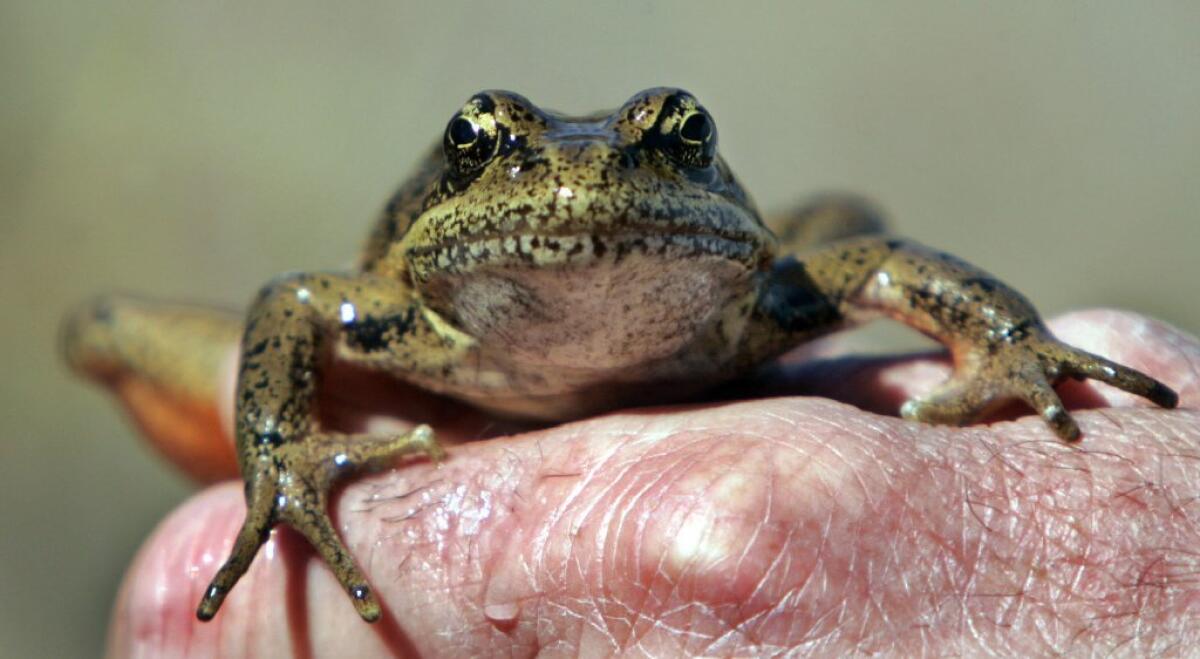Amphibians declining in the U.S., report says

Amphibians are disappearing in the United States at an unexpectedly brisk pace. More disturbing, according to a report this week from the U.S. Geological Survey, the more rare the species of toad, frog or salamander, the higher the risk of decline.
The author’s sobering conclusion: “This analysis suggests that amphibian declines may be more widespread and severe than previously realized.”
The study found that on average, populations of amphibians vanished at a rate of 3.7 percent each year. At that rate, those species would disappear from half their current habitats in about 20 years.
Some amphibians already listed as threatened by the International Union for Conservation of Nature — including the boreal toad and the yellow-legged frog — are vanishing from their habitats at 11.6 percent a year.
At that pace the threatened species would disappear from half their current habitats in six years.
More bad news: The report finds that declines are occurring on lands managed by federal agencies and came to the surprising conclusion the greatest observed rate of decline was found on lands with the greatest protections — those under the National Park Service.
One-third of amphibian species worldwide are thought to be imperiled.







